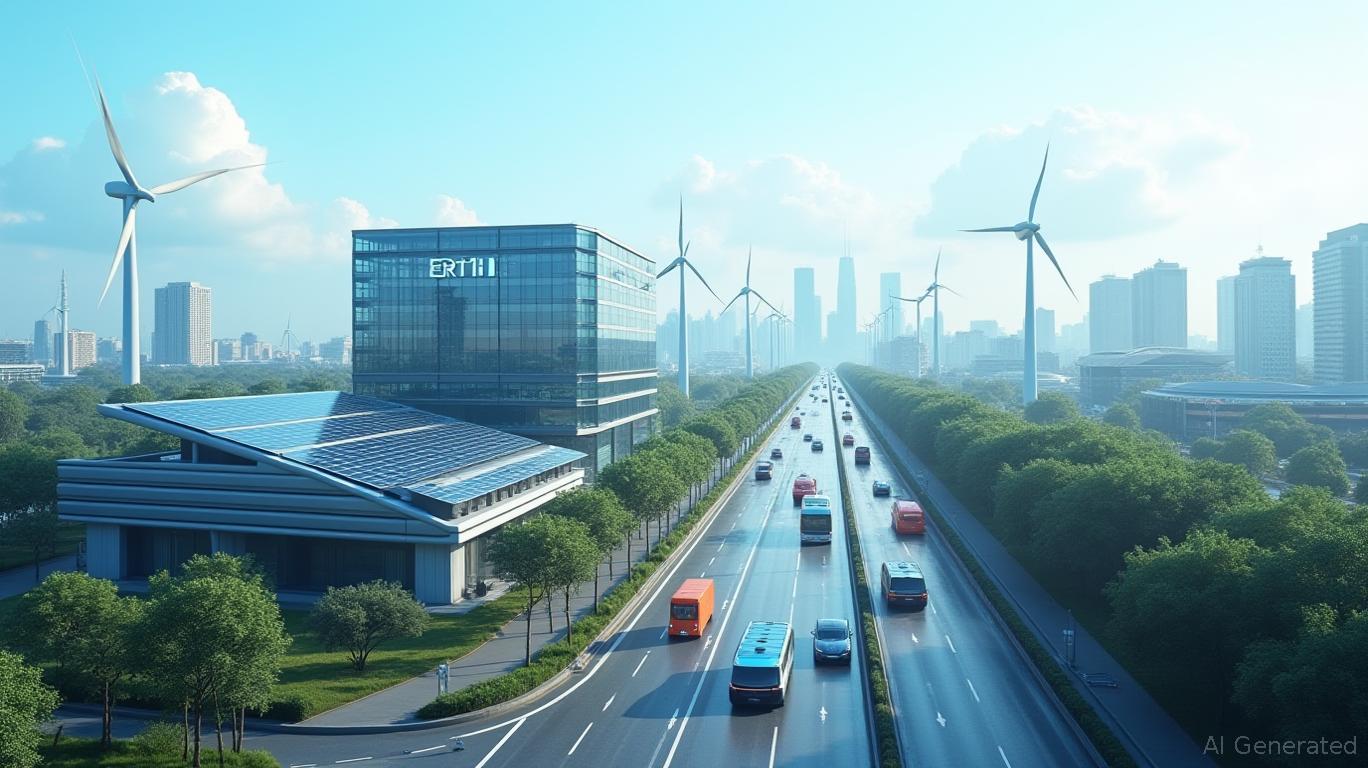ERTH's Dividend Shift: Can Sustainability Navigate Macro Storms?
Albert FoxMonday, Jun 23, 2025 11:54 am ET
The

### The Dividend Dance: Caution or Confidence?
ERTH declared a $0.2067 dividend per share on June 20, 2025, followed by a 15.8% dividend rate increase to $0.44 on June 21—the first hike since a March cut from $0.40 to $0.38. This volatility in payout signals sensitivity to market conditions, reflecting both the ETF's exposure to cyclical sectors and the uneven performance of its underlying holdings. While the increase may hint at renewed optimism in its portfolio companies, it also underscores the challenges of maintaining consistent returns in an environment where macro risks are escalating.
### Sustainability Strategy: Strengths and Strains
ERTH tracks the MSCI Global Environment Select Index, focusing on companies driving environmental sustainability across six themes: , energy efficiency, , sustainable water, pollution prevention, and sustainable agriculture. Its top holdings include tech giants like NVIDIA (a leader in AI-driven energy efficiency) and Tesla (a cornerstone of the electric vehicle revolution), as well as Chinese firms like BYD and Digital Realty Trust (data centers critical to cloud-based sustainability solutions).
The ETF's sector allocation highlights its dual focus: Consumer Discretionary (17.46%) and Information Technology (10.9%), which benefit from secular trends in green innovation but also face high volatility. For instance, tech stocks are tied to interest rate cycles and geopolitical risks, while consumer discretionary exposure relies on resilient spending—a fragile assumption amid rising recession fears.
### Macro Risks: A Perfect Storm?
ERTH's strategy is under siege by three major risks:
1. Geopolitical Tensions: Ongoing Israel-Iran conflicts and U.S.-China trade disputes threaten supply chains, particularly for tech and energy firms. For example, BYD's reliance on Chinese lithium supply chains could face disruptions.
2. Interest Rate Uncertainty: The Fed's “wait-and-see” stance on rate cuts creates uncertainty for high-beta tech stocks, which dominate ERTH's portfolio. Lower rates could reduce capital costs for innovators but also risk inflation surprises that hurt equities.
3. Sector Volatility: Consumer discretionary stocks (e.g., Tesla, MINISO) face slowing demand if U.S. GDP growth weakens further. Meanwhile, the tech sector's AI arms race—while promising—requires massive capital expenditures, squeezing margins.
### Performance: A Cautionary Tale
ERTH's 3-year standard deviation of 9.51% and a maximum drawdown of 1.0% reveal its susceptibility to market swings. Negative returns of -1.45% over six months and -7.43% over three years have led analysts to assign a “Strong Sell” rating, citing weak performance, negative net flows, and a relatively high expense ratio of 0.62%.
The ETF's transition from the MSCI Cleantech Index to its current benchmark in 2021 has also raised concerns about ESG data accuracy. Critics argue that the index's reliance on “environmental impact themes” may overstate the sustainability credentials of some holdings, risking misallocation of capital.
### Investment Considerations: Proceed with Eyes Wide Open
ERTH offers a compelling thematic play for investors who believe in the long-term growth of sustainability-driven industries. Its holdings in AI-enabling tech (NVIDIA), EV leaders (Tesla), and infrastructure plays (Digital Realty) align with the global push for decarbonization. The dividend hike suggests confidence in its portfolio's ability to generate cash flows, even if unevenly.
However, three red flags demand attention:
1. Costs: The 0.62% expense ratio is steep compared to broader ESG ETFs, eating into returns.
2. Sector Concentration: Overweighting volatile sectors like tech and consumer discretionary amplifies downside risks.
3. Geopolitical Exposure: China's dominance in the ETF's portfolio (BYD, Tencent) leaves it vulnerable to trade wars and regulatory shifts.
### The Bottom Line
ERTH is a high-risk, high-reward bet for aggressive investors seeking exposure to sustainability themes. Its recent dividend increase hints at underlying strengths in its portfolio, but its performance metrics and macro risks demand caution. To mitigate volatility, consider:
- Pairing ERTH with defensive assets (e.g., utilities or gold) to offset its cyclical exposure.
- Allocating a small portion (5-10% of a sustainable portfolio) to ERTH, while diversifying across broader ESG funds with lower fees.
- Monitoring Fed policy and geopolitical developments closely—these will determine whether ERTH's tech-heavy tilt becomes a liability or an advantage.
In the end, ERTH's ability to navigate macro storms hinges on whether its sustainability-driven companies can outperform in a world where interest rates, trade wars, and sector volatility define the landscape. For now, proceed with optimism tempered by prudence.
Disclaimer: The news articles available on this platform are generated in whole or in part by artificial intelligence and may not have been reviewed or fact checked by human editors. While we make reasonable efforts to ensure the quality and accuracy of the content, we make no representations or warranties, express or implied, as to the truthfulness, reliability, completeness, or timeliness of any information provided. It is your sole responsibility to independently verify any facts, statements, or claims prior to acting upon them. Ainvest Fintech Inc expressly disclaims all liability for any loss, damage, or harm arising from the use of or reliance on AI-generated content, including but not limited to direct, indirect, incidental, or consequential damages.

Comments
No comments yet